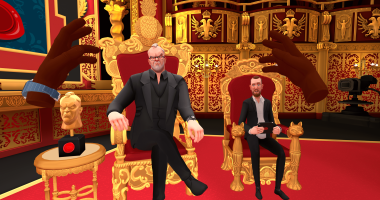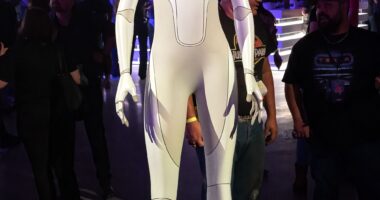FLYING saucers might soon be used to explore the moon and asteroids orbiting our planet.
Researchers at the Massachusetts Institute of Technology (MIT) are looking at ways to create a new kind of hovering spacecraft that can operate sans air.
The craft will work similarly to how birds and planes operate: levitating using the electric charge available from interplanetary surfaces.
The researchers are currently testing out the spacecraft and have been working on a beta shaped as a small disc the size of a human palm.
The “flying saucer” shaped object weighs just under a regular chicken egg.
The electric can be charged “much the way static electricity can cause a person’s hair to stand on end,” the researchers said in a statement.
“We think of using this like the Hayabusa missions that were launched by the Japanese space agency,” said Oliver Jia-Richards, lead author of the study and a graduate student in MIT’s Department of Aeronautics and Astronautics.
“That spacecraft operated around a small asteroid and deployed small rovers to its surface. Similarly, we think a future mission could send out small hovering rovers to explore the surface of the moon and other asteroids.”
Celestial bodies, like the moon and asteroids, don’t have atmospheres that could support the flight of a tradition flight craft, but the lack of atmosphere actually allows the moon and asteroids to receive direct sun exposure.
This allows their surfaces to build up an electric field.
“Then we thought, what if we transfer our own charge to the surface to supplement its natural charge?” Jia-Richards says.
The MIT researchers, supported in part by NASA, found that a small disc-shaped craft with small thrusters could produce enough electrostatic force to hover over the charged surface.
This in turn allowed the small craft to hover and essentially levitate over the charge, with their research showing their design concept was strong enough to levitate a 2-pound object on the moon or a large asteroid.
The moon’s natural surface charge can lift lunar dust more than three feet in the air, but the added thrusters means there can be an even larger repulsive force.
This can offer endless possibilities for NASA and other space exploration expeditions.
“In principle, with better modeling, we could levitate to much higher heights,” said Jia-Richards’ co-author Paulo Lozano.
“With a levitating rover, you don’t have to worry about wheels or moving parts,” Lozano added. “An asteroid’s terrain could be totally uneven, and as long as you had a controlled mechanism to keep your rover floating, then you could go over very rough, unexplored terrain, without having to dodge the asteroid physically.”











